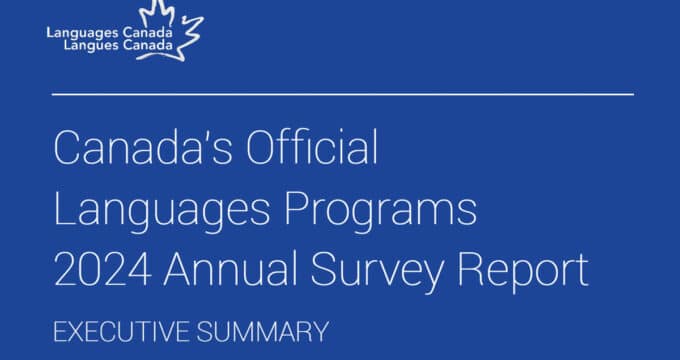Attracting students who stay
It is now widely understood that international students provide value to local and national economies that far exceeds the fees they pay for their education. For example, in 2016, international students spent $15.5 billion on tuition, accommodation, and personal spending in Canada. And in the UK, researchers have found that every ten non-EU students contribute a net impact of nearly £1 million (US $1.4 million) to the economy. Beyond tuition and living expenses, international students have great long-term potential to boost the economies of the countries in which they study if they are able to work after graduating and even to immigrate. This potential is especially valuable in countries with ageing populations that exert downward pressure on productivity and economic growth, and those population characteristics are prevalent in most developed nations. As a result, policies aimed at encouraging international students to stay on after they graduate are increasingly common. This trend dovetails nicely with the fact that for many students, work opportunities influence where they choose to study abroad. Here is a roundup of what seven countries are doing today to attract international students and to make it easier for them to work after graduating.
Ireland
Ireland’s goal is to host 44,000 foreign students in higher education institutions by 2019/20. In 2016/17, enrolments were 43,600, a jump of nearly one-third over the total in 2014/15 (33,100), so it seems almost certain that Ireland will meet its target. Immigration Policy: In 2017, Ireland extended the length of time master’s-level and PhD graduates can stay in the country to seek employment to 24 months. In addition, Ireland’s Third Level Graduate Programme allows international graduates to immigrate provided they have been offered a job for at least two years at a certain salary or a job that is on Ireland’s list of highly skilled occupations.
Canada
Canada hosted 494,000 international students in 2017 – 20% more than in 2016 and surpassing its 2022 target of 450,000 foreign students enrolled. The latest IDP Student Buyer Behaviour Survey found that students think Canada is the best destination for post-graduate work opportunities – ahead of the UK, Australia, New Zealand, and the US. Immigration Policy: In 2016, Canada adapted its permanent residency programme, the Express Entry system, to make it easier for international graduates to immigrate. A new scoring system – including points awarded for study in Canada – gives international graduates a much better chance of being granted residency.
Japan
Japan’s goal is to host 300,000 foreign students by 2020; as of 2017, over 267,000 were enrolled. In addition, Japan wants to raise the employment rate of foreign graduates from the current 30% to 50% by 2020. Immigration Policy: The Japanese government is offering new incentives such as subsidised company internships, help with finding jobs on graduation, stepped-up Japanese language courses, and more streamlined processes for work visas after graduation.
China
China’s goal is to host 500,000 foreign students by 2020, and that target will almost certainly be met: Chinese universities and schools hosted almost 490,000 students in 2017, an increase of 10.5% over the previous year. Immigration Policy: In 2017, the Chinese government introduced a new policy allowing foreign students with post-graduate degrees or higher from Chinese or “well-known” foreign universities to be offered employment within a year after graduation. Previously, it was almost impossible for foreign students to find work in China.
Malaysia
Malaysia aims to double its international enrolments from more than 135,000 in 2014 to 250,000 by 2025. In 2016, Malaysia enrolled 172,900 international students – 132,700 of them in higher education. Immigration Policy: Though widely considered to have one of the world’s most developed international education strategies, Malaysia was until recently also known for being a frustrating place to get a visa. But in 2016, the Malaysian government, in partnership with Education Malaysia Global Services (EMGS), launched the EMGS mobile app to make the process easier.
Taiwan
In 2014, the Taiwanese government established a goal of attracting 150,000 international students in 2020. But progress was slow, and enrolment growth flattened to 0% in 2016/17, a development largely attributed to tension with mainland China. In 2016, the Taiwanese government narrowed its focus to help meet its overall target and developed a plan – dubbed the New Southbound Policy – to more than double the number of South and Southeast Asian students from 28,000 to 58,000 by 2019. Immigration Policy: In 2016 Taiwan introduced streamlined visa applications and made it easier for international students from places like Australia, Bangladesh, Bhutan, India, Nepal, New Zealand, Pakistan, and Sri Lanka – as well as other ASEAN countries – to apply for work visas after graduating. Scholarships for students from these countries are also a key part of the NewSouthbound Policy.
Australia
In 2017, Australia enrolled fully 624,000 international students, a 13% increase over 2016. Its goal for 2025 is 720,000. Immigration Policy: In 2016, Australia stream-lined its visa policy to make it easier for inter- national students to get into programmes offered by ELICOS English-language schools and vocational (VET) institutes. Previously, applicants to these types of programmes were subject to more complicated and restrictive visa rules than international students applying to Australian universities. The revised policy has played a major part in boosting enrolments in the ELICOS and VET sectors and international enrolments in Australia in general. For additional background, please see:
- “Up and down the table: Growth trends across major international study destinations”
- “Seven in ten foreign students plan to stay in Germany after graduation”
- “Denmark concerned about the high proportion of foreign students who leave after graduation”
- “Increasing the ‘stay rate’ of international students”


















